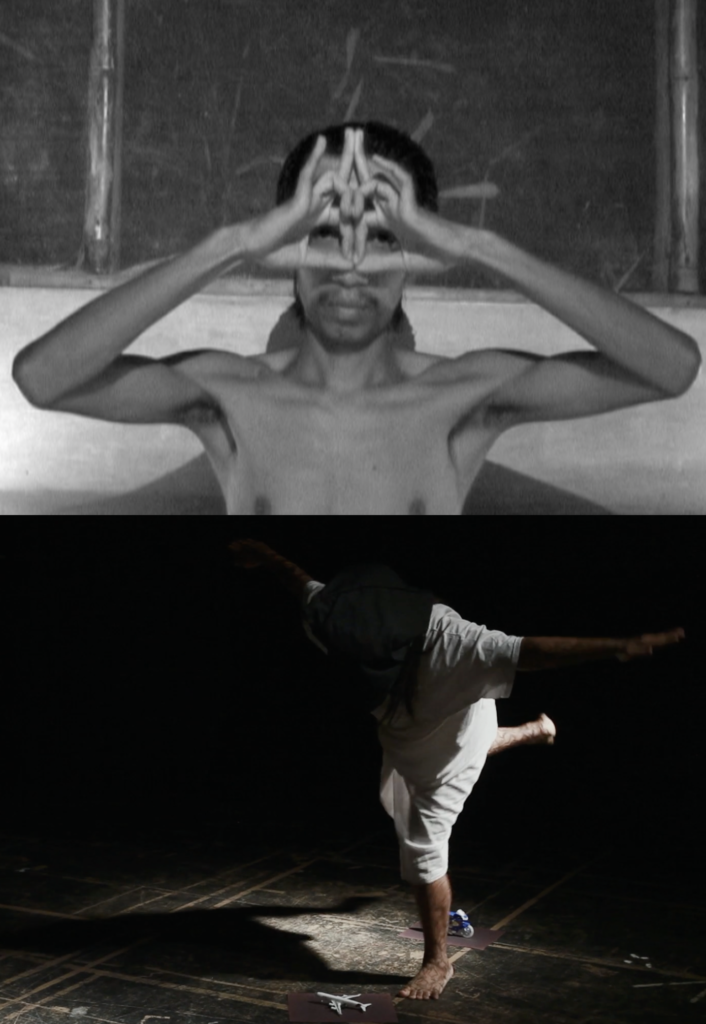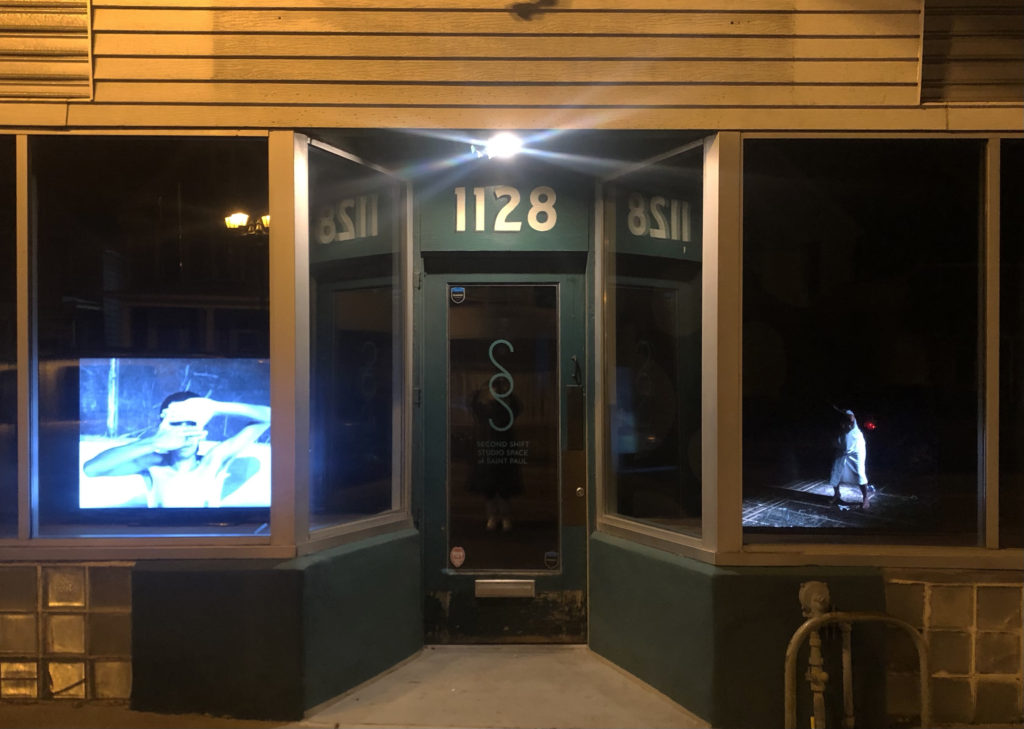
Below: Chaw Ei Thein, Untitled (2010 – ), video still from Listen by Min Min Hein (2017).
Viewable from the public sidewalk in the window vitrines of Second Shift Studio Space, Body Sequencing Solidarity features two celebrated performance works by FD13 resident artists Moe Satt and Chaw Ei Thein.
Created independently of one another, the performances share in common the centering of the artist’s bodies through sequential choreography as a technology of solidarity in the aftermath of the 2007 Saffron Revolution, an uprising with strong ties to the 1988 and the 2021 calls for democratic reforms specific to Burma. While both performances are considered iconic to Burma’s art histories, they also alert us to the power of art and artists today during the unprecedented multi-ethnic civil disobedience movement across the country and its diasporas since the military junta took power on February 1, 2021.
In excerpts of WEs:10,184 Bodies to Body (2010 -), Chaw Ei Thein performs a body sequence based on a torture manual used in junta-controlled prisons. Self-inflicting a choreography intended to violently strain the body, mind, and spirit, she foregrounds strength and perseverance to honor those who remained in prison for years after her detainment. Moe Satt’s F‘n’F (Face and Fingers) (2009) documents the artist striking and transitioning between 108 poses that focus on his head and hands. This secularization of mudras, or hand gestures sacred to Dharmic religions’ deities, rebels against coopting practices in militarized Myanmar. F‘n’F is equally a document of Moe Satt’s early exploration of conceptual artistic languages’ relation to censorship, inscribing through the body a language of the people – everyday deities striving to commune and communicate free from military rule.
Body Sequencing Solidarity celebrates differential artistic vocabularies of resistance related to the political rendering of bodies and personhoods – Moe Satt in-country and Chaw Ei Thein in-exile. The exhibition site in St. Paul thus also becomes poignant as home to the largest Karen refugee community in the United States who, alongside many of Minnesota’s Karenni and Mon, are active in liberation movements across Burma.

The exhibition is curated by Erin Gleeson, Director, FD13. With special thanks to Second Shift Studio Space.
